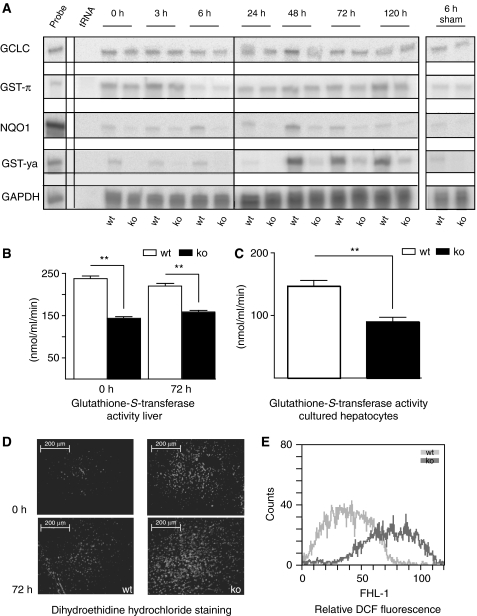Figure 2.
Reduced mRNA levels of Nrf2 target genes and enhanced oxidative stress in normal and hepatectomized livers of Nrf2 knockout mice. (A) Total cellular RNA (10 μg from pooled livers of at least four mice per time point and genotype) was analyzed by RPA for transcripts encoding Nrf2 target genes. The time after hepatectomy or sham surgery is indicated on top of each lane; 0 h indicates resting liver, which was removed during hepatectomy; 20 μg tRNA served as a negative control and 1000 c.p.m. of the hybridization probes were used as a size marker. Hybridization with a GAPDH riboprobe served as a loading control. Representative autoradiograms of two independent experiments are shown. (B) Total lysates from resting and injured livers 72 h after partial hepatectomy were assayed for GST activity. The formation of glutathione/1-chloro-2,4-dinitrobenzene conjugates was measured spectrophotometrically. Bars represent mean±s.e.m.; **P<0.01 (n=6). (C) Hepatocytes were analyzed for GST activity. Bars represent mean±s.e.m.; *P<0.05; **P<0.01 (n=6). (D) Freshly prepared cryosections (7 μm) from non-injured and injured livers (72 h after hepatectomy) were stained with DEH and analyzed by fluorescence microscopy (n⩾5). (E) Primary hepatocytes from Nrf2 knockout and wild-type mice were treated with H2DCFH-DA and analyzed by flow cytometry for the levels of intracellular ROS.

